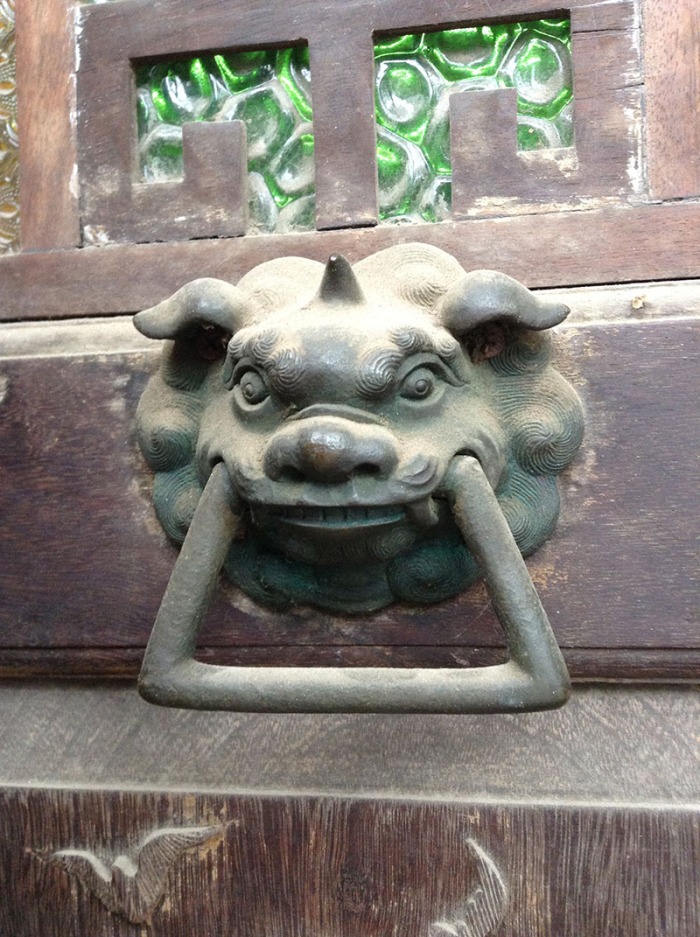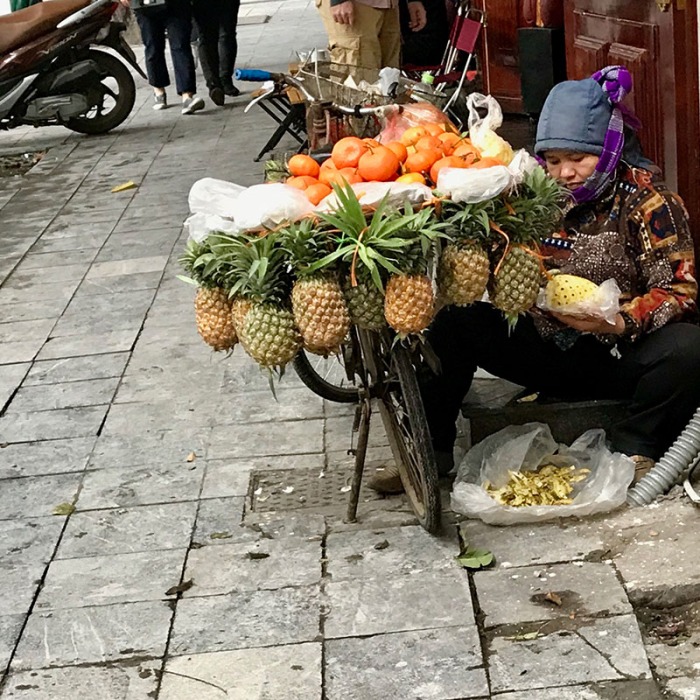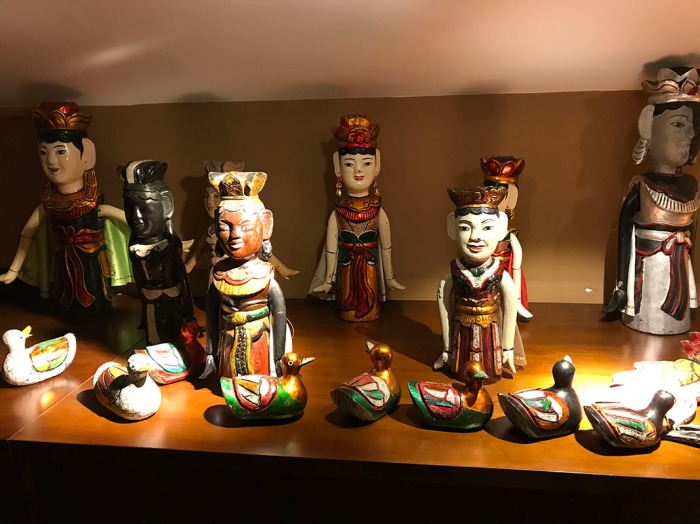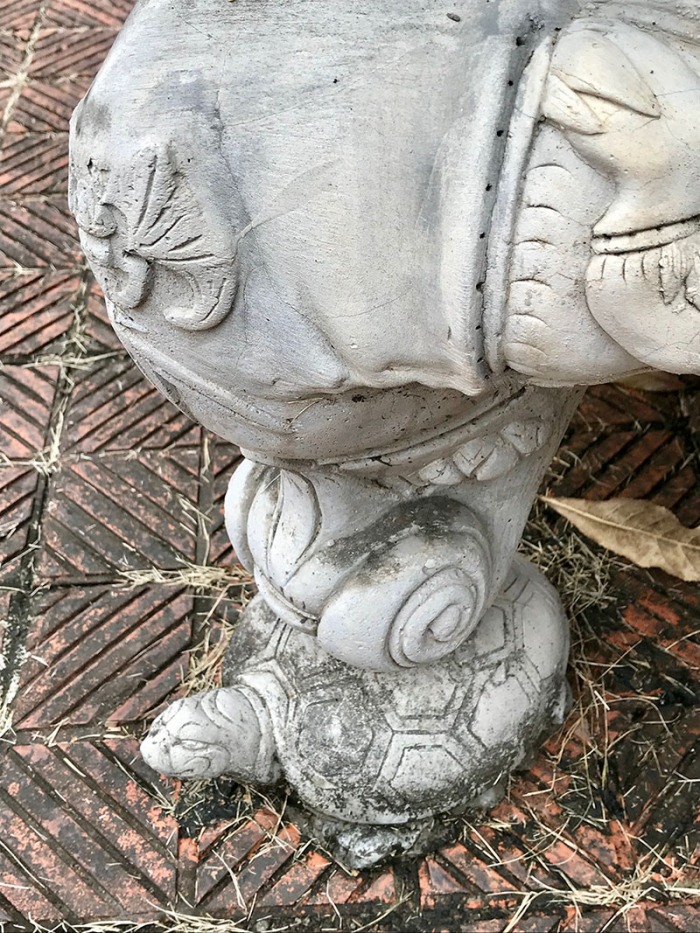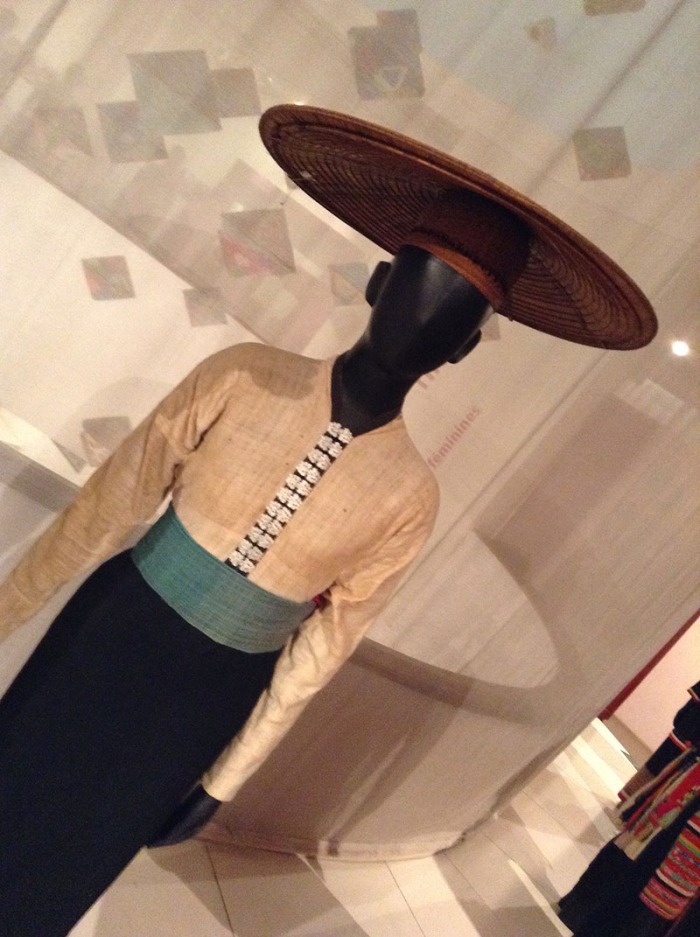My wife and I press forward on our “inspircation”—a holiday that is part vacation and part inspiration-finding for our 2018 projects. We spent Day 2 of our time in Cambodia trekking through some of the biggest temples in Angkor, but had preplanned to take Day 3 off from the temples and to hang around Siem Reap, explore the markets and the hotel pool.
We did this partly to rejuvenate physically, but also just mentally. Venturing through Angkor has been such an overwhelming experience—it’s hard to absorb everything. We felt that a day off in between would set us up to better appreciate a second day of exploration.
Poverty paparazzi
It’s not just the beauty here that is overwhelming, though. It’s also the poverty. Everywhere you go, whether it be temple or town, there are people trying to sell you something, people who are in desperate need. I’m not much of a shopper; I tend to buy one or two things every time I travel, and they’re rarely trinkets. And I’m not the kind of person who wears a T-shirt with the names of places I’ve been scrawled across the front. But here, every time you leave a temple, or, in the case of the town of Siem Reap, a restaurant, people scurry up to try and sell you their goods.
“Kind lady! Kind man? Something to buy? Something to buy? I have cheap price for you!” This is the common refrain we hear.
In many cases, those people are children. They are particularly hard to turn down. One thing that I have found particularly distressing is a penchant by tourists to photograph these children. In one case I saw an entire tour bus of people crowd around an infant boy, snapping shots at him like he was a celebrity and they were some sort of poverty paparazzi. It wasn’t that the boy was smiling, laughing, or doing something cute and precocious. He was stark naked, wandering around in the dust and dirt in his bare feet.
I guess the people found that . . . actually, I can’t even begin to imagine what was the mindset behind that episode. They clicked their photos then scurried off in a herd, leaving the boy exactly where he was, ambling around in the dust, his mother sitting nearby, slightly bewildered. Or perhaps she wasn’t bewildered at all. Perhaps she was just used to this sort of happening. But I can’t imagine she wanted it. It’s not like any o the herd gave her money for photographing her son. Her naked son.
It’s the norm here for the children in these “strip malls” of shops to be naked, at least from the bottom down. They might wear a T-shirt, and that’s it. Why someone would want to photograph a naked kid is beyond me. I find it disturbing on so many levels.
In another instance, a woman with a very expensive camera photographed a little girl trying to help her mom sell souvenirs outside a temple. She even clucked at her and tried to direct her pose, tried to make her smile. Then she sauntered off, pictures taken, without so much even looking at the girl’s wares, her mother, or even offering a dollar. It disgusted me, as if, somehow, this tourist felt the girl was just another part of the landscape for her to coax into her camera.
So, without bowing completely to western consumerism, which equally upsets me, Marcie and I have tried to buy what we truly need (hats, water) and what we truly want (a few items of clothing, a book, and odds and ends) from the locals, and we’ve endeavoured to tip well. Which, really isn’t hard to do when you can eat a meal for $5 and have a draught of beer for fifty cents.
The positive side I’ve tried to take from all of this is to admire the Cambodian people for their hard-working spirit and perseverance. It’s humbling. But, if you go to Cambodia, please just leave their kids alone!
That’s enough about my rant when it comes to how people treat other people. Time to talk more about temples . . .
Elephantine traffic
We had the same guide as the day before, Yam. He picked us up in his tuk-tuk at 9 am, which provided us with a much more leisurely start to our day compared to the 4:30 pick up two days previously, when we had set out to watch the sun rise at Angkor Wat.
This time, we got to whisk into the Angkor region in full daylight. In fact, our route took us past and through many of the temples we had already visited, including Angkor Wat and Angkor Thom.

We had a “only-in-Asia” moment while passing through Angkor Thom. Yam had to pull out and pass an elephant!

We just didn’t pass giant mammals, though; we also passed beautiful countryside. Here you can see farmers and their livestock, going about their daily lives.
I was able to snap this photo from our tuk-tuk:

Notice how she is not naked. It’s called discretion, my dear poverty paparazzi. Oh, right. My rant was finished already.
Preah Khan
Even though our start was later, the weather was significantly cooler. The sky was clouded, so the sun wasn’t hammering at us as with our visit to the other temples. We hoped this would make our day a lot easier—and it did. The previous temple day had involved six bottles of water each, but on this day, we barely made it through one apiece!
Our first temple of the day was Preah Khan.

Near the entrance, we happened upon two flanking figures, each grasping the tails of cobras in their hands. I recognized this figure as Garuda, having seen many depictions of this mythical creature on my visits to Thailand.

Once we entered Preah Khan, we found it to be expansive, beautiful, and, in many sections, falling apart. There is a large crew installed there to conduct renovations, but part of the charm is to suddenly turn a corner and find rubble filling a doorway. To me, it just helps signify the passage of time, giving the place a sense of romance and adventure.






There weren’t as many tourists here as we had seen at previous temples and, because the site is so vast, we had plenty of opportunity to take photos without having to worry about getting in any one else’s way.
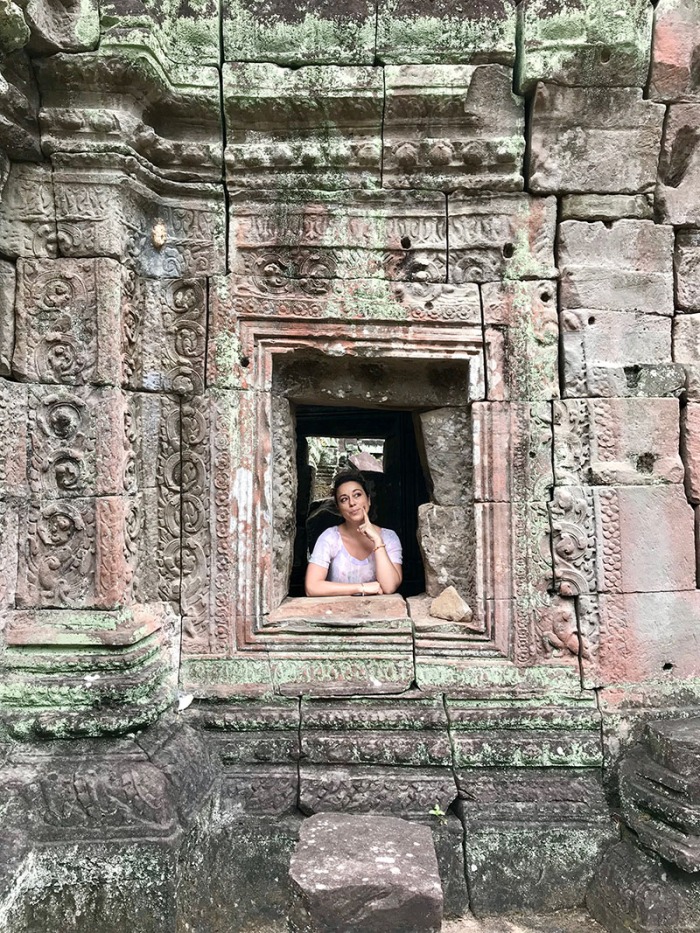

Inside the centre of the complex, we found an old monk providing blessings. Marcie was instantly attracted to her energy; despite her crooked frame and frail limbs, the monk was radiating positive energy, treating all passersby with her toothless grin.
Marcie received a blessing, which, now that I think about it, was a powerful moment for her that played out later in the day (more on that later). Suffice it to say for now, that part of this blessing involved the monk whisking away negative energy.

There was plenty of time and space here for me to find a quiet spot, take out my notebook, and do some brainstorming and note taking. I’m trying to capture as much inspiration to help aid the world building I need to do for my new book series, Zoone. Marcie snapped this photo of me “at work”:

And there is plenty of inspiration to be discovered here. Similar to other temples we have visited, there are many areas at Preah Khan where the trees have insinuated themselves into the stone walls and become permanent fixtures.



Those are the big-picture views, but here a few photos of the details I captured at this temple:



On the way out, we saw this solemn monkey. One of the guards was trying to coax him to take a banana, and the little fellow wouldn’t go for it. The guard finally tossed it to him and let him eat it at his leisure. Here’s my photo, taken from a distance. Thankfully, one of those poverty paparazzi weren’t around, or they might have tried to make him dance for their amusement. (Though I suppose I am guilty of photographing a naked monkey.)

Neak Pean
We met Yam on the East side of the temple (so didn’t have to backtrack through the entire temple), and he carried us away to our next stop: Neak Pean. This is a unique site, constructed on a man-made island, which means taking a long walkway across the water to reach it.

The views are stunning. The temple is in the middle of a pond on the island and while you can’t actually reach it, it offers some stunning perspectives.

One such perspective came from Marcie. If you have ever met my wife, then you know that she pretty much lives in her own world (we call it “Marce”—you can pronounce it “Mars” with a longer “s” sound at the end).
Here is basically how our conversation went at a holy Buddhist temple:
Marcie: Maybe we’ll see flying frogs.
Me: Those don’t exist.
Marcie: Yes, they do. I’ve seen them.
Me: No, you haven’t.
Marcie: I’m pretty sure I have.
Me: There’s no such thing as flying frogs.
Marcie: Well, there are flying squirrels.
Me: Those are two different things! One’s a rodent and one’s an amphibian.
Marcie: Well, I still think we’ll see one.
Which, incidentally, is why you can’t win an argument with my wife. Because if she decides something’s true, then it is. Then, once we were back at the hotel, I looked up flying frogs and it turns out they do exist. Sigh. I hate being wrong.
We trekked back along the bridge to reconnect with Yam. By this time the bridge was busier and it’s really not that wide—especially when there are herds of tourists all stopping, posing, and turning with giant bags on their backs. I’m surprised I didn’t see anyone plunge into the water. I’m surprised it wasn’t one of us.
At the end of the bridge, we ran the same gauntlet as before—a long line of merchants trying to sell us anything and everything. We had already bought a guidebook to Angkor, so we settled on the response of “we already have it!”

Ta Som
After Neak Pean, we headed to the beautiful temple Ta Som, sequestered in the jungle. The main entrance is capped by giant faces, similar to the ones we saw at Prasat Bayon.


Once you enter through the gate, there are a few different corners to explore. We realized that we had started developing a system to our explorations; instead of going straight through, we immediately branch off at our first opportunity and venture through the outskirts, slowly moving inward. This seems to be the opposite of what most visitors do, so gives us a bit more privacy and room to meander and contemplate.

I keep finding lonely brooms tucked away in different corners of the temples. I don’t know why they capture my attention . . . there’s just something whimsical and magical about an unused broom in such a location. (Hmm. Maybe there’s a story brewing here.)

At one point, Marcie got “low”; anyone with diabetes will understand the term. It means she suspected having low blood sugar, and so had to check her levels. She has to do this throughout the day, then make adjustments accordingly, either by giving herself insulin through her pump-injector or by eating and drinking.
I just snapped this photograph while she was checking her blood; even though you might be in the most magical place in the world, diabetes stops for no one! But, on the other hand, Marcie doesn’t stop for anyone either. Having Type-1 (or juvenile) diabetes has never prevent her from exploring, or taking on, the world!

Despite the fact that the temple is surrounded by walls, the trees are having their own say. This is no more apparent than at this gate, which has been oppressed by a giant strangler fig. We loved this image, and took (or had taken) many photos:


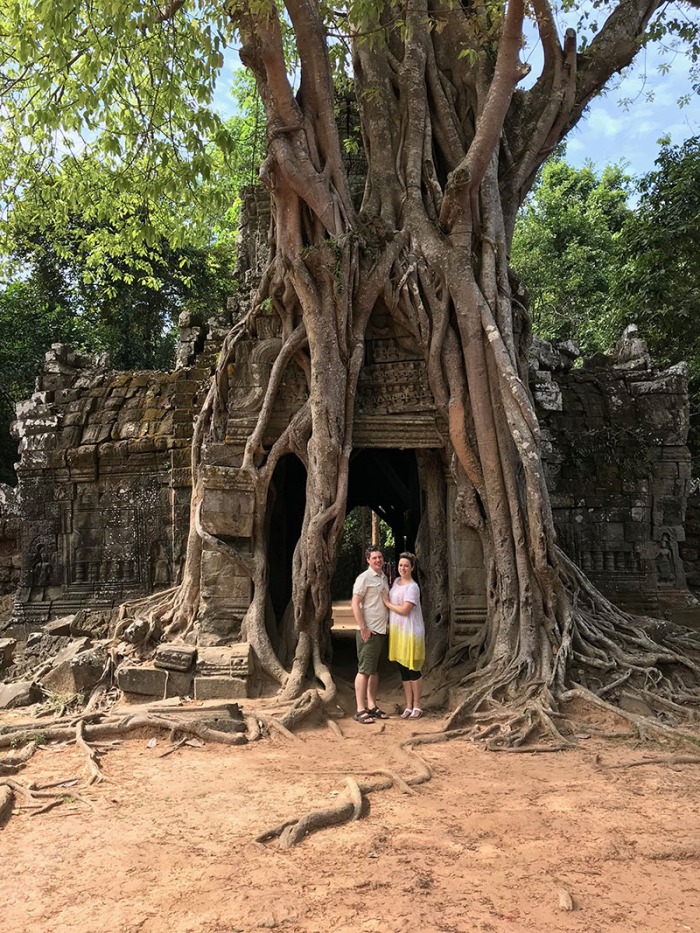
Beyond the tree, on either side, was a long wall, and the jungle. I ventured along it, leaving Marcie to rest at the gate, and found more trees reaching onto the wall, as if they were attempting to pluck the stones from the ground and devour them whole.

Then I came upon what looked like a gigantic (but, thankfully deserted) ant hill and decided I better whisk back into the temple before I got attacked by something. Like an ant. Or a monkey. Or maybe one of those trees!
East Mebon
After Ta Som, we took a short ride to the temple known as East Mebon. It was once surrounded by a moat, creating an artificial island, but now the surrounding area is dry. We ending up dubbing this the “elephant temple” for the statues of the magnificent creatures that are positioned on the four corners of the outer and inner walls.
As with Ta Som, we entered the main gate, climbed the stairs, then immediately veered to our left to explore the outskirts of the complex, thus avoiding the crowds and finding our own places of solitude. It was here where we found the first of our elephants.


The outer walls are lined with trees now, creating shady and romantic walkways.

Once again, there was time for me to sit, contemplate, and brainstorm. And what’s better than brainstorming next to an elephant? Marcie captured these photos of me—notice how I’m sitting out in the open, without even a hat. This is something I would have never been able to do when visiting the other temples, two days earlier. That’s how different the weather was. The temperature this day was perfect: warm and comfortable.


Eventually, we made our way into the inner city, taking in the turrets, doorways, and stairways.





Pre Rup
The next temple on our itinerary, Pre Rup, was similar to East Mebon in its architectural features, size, and layout—so much so, in fact, that I confess I’ve had trouble sorting out my photos between the two of them.
There are no elephants at Pre Rup (though many lions), which is one distinguishing feature. The other is that the jungle is not so close, offering a far more expansive view of the surrounding landscape.








This temple not only offered us spectacular views, but, for Marcie, an epiphany. Standing up there, high above the world, she was suddenly overcome with emotion and experienced what she described as a significant moment of clarity. I’ve had a similar experience many years ago on the Great Wall of China. I haven’t pressed Marcie, yet, on exactly what became clear for her—but I’m pretty sure it’s no coincidence that she had been blessed by that old monk only a few hours earlier!
Prasat Kravan
Our final temple of the day was a small one, Prasat Kravan. In some way, it was an anti-climatic finish to our day. Not only is the temple small, it was being swarmed by workers who were setting up for an event. We assumed the hubbub was for a wedding, but Yam informed us it was for a corporate VIP event.


Still, we found some interesting details, such as this inscription inside one of the door jambs, weathered by time:

And here’s a final parting shot of Marcie, summing up how we’ve felt at the end of our tour:

Our adventures aren’t quite done yet. We’re off to explore a floating village and then heading to the big city of Phnom Penh. More inspiration to come!












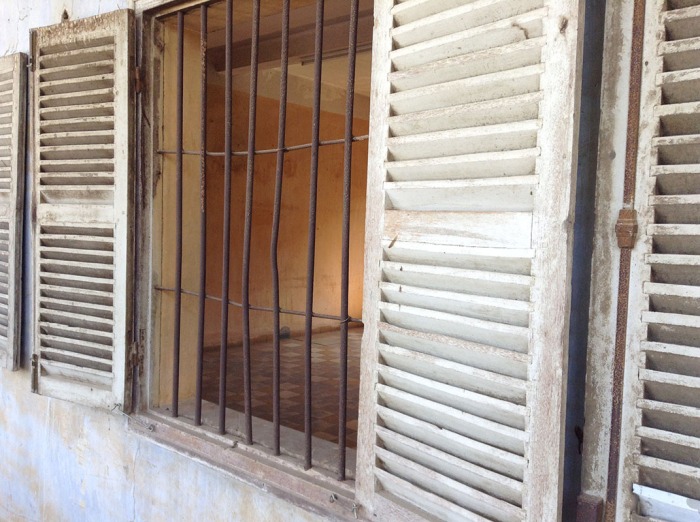


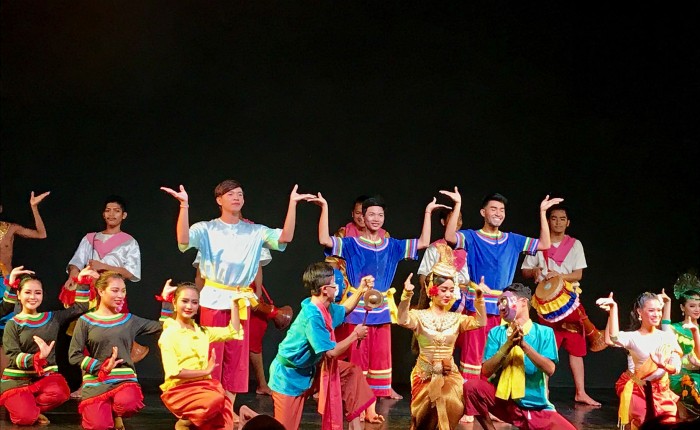





















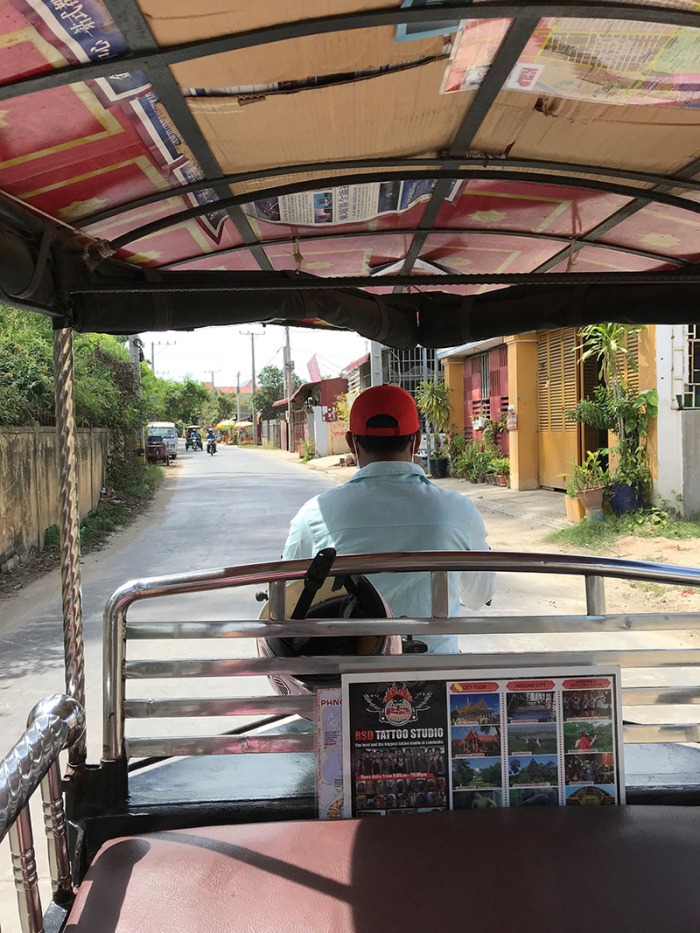











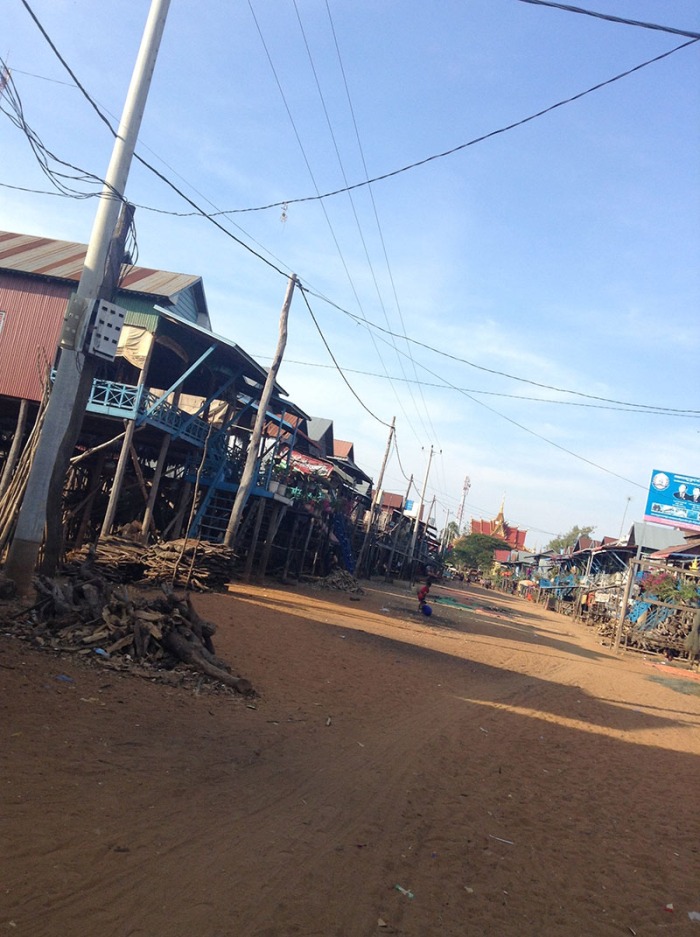


















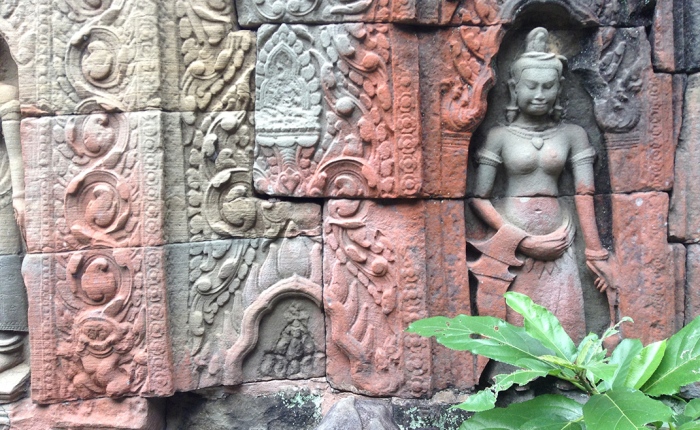







































































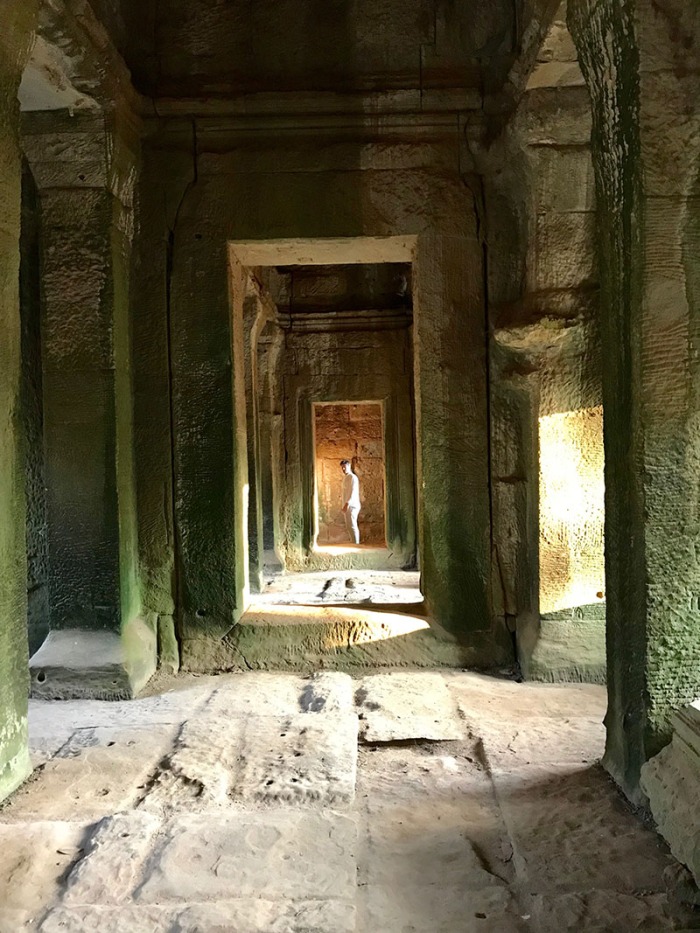
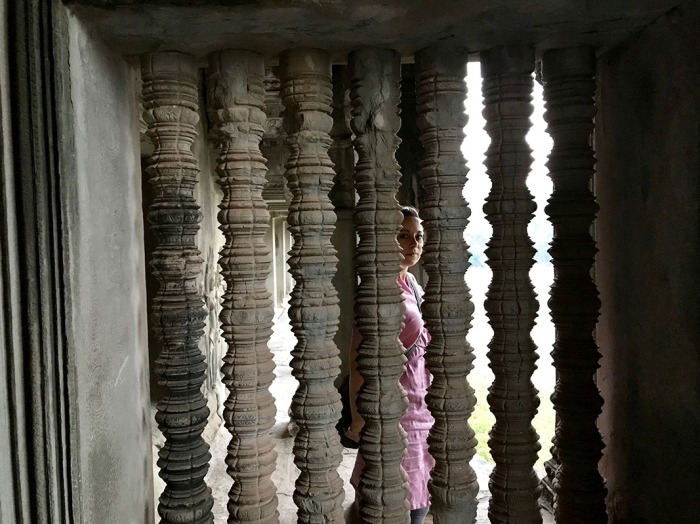




































 We wandered past the scaffolding, at which point Marcie declared she was going to sit out this climb. The steps were the original stone ones—and they were precariously steep. So, while Marcie rested at the bottom, I heaved myself to the top; witness my victory pose!
We wandered past the scaffolding, at which point Marcie declared she was going to sit out this climb. The steps were the original stone ones—and they were precariously steep. So, while Marcie rested at the bottom, I heaved myself to the top; witness my victory pose!












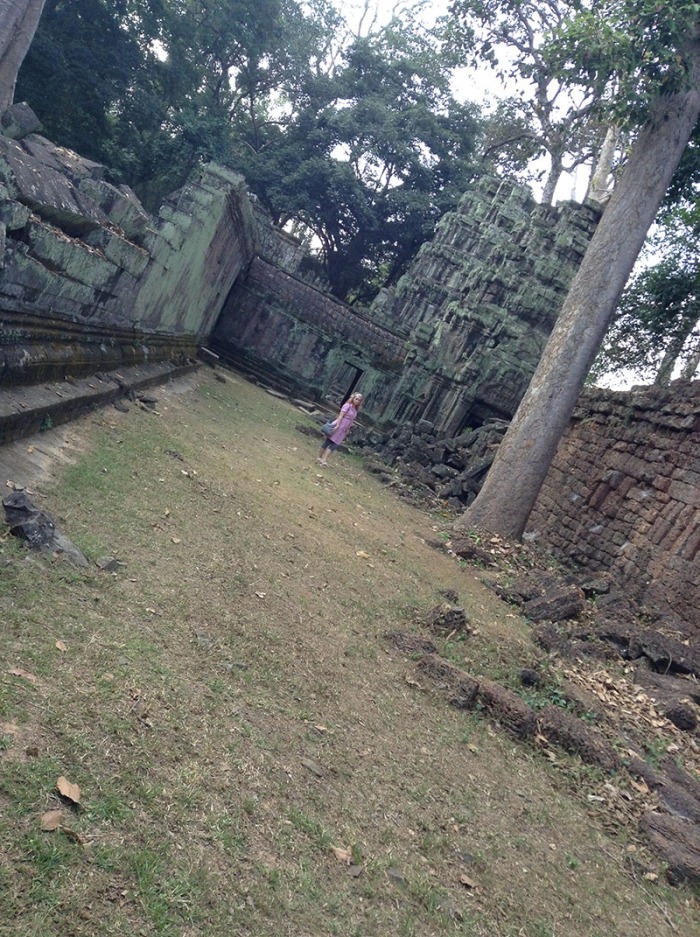

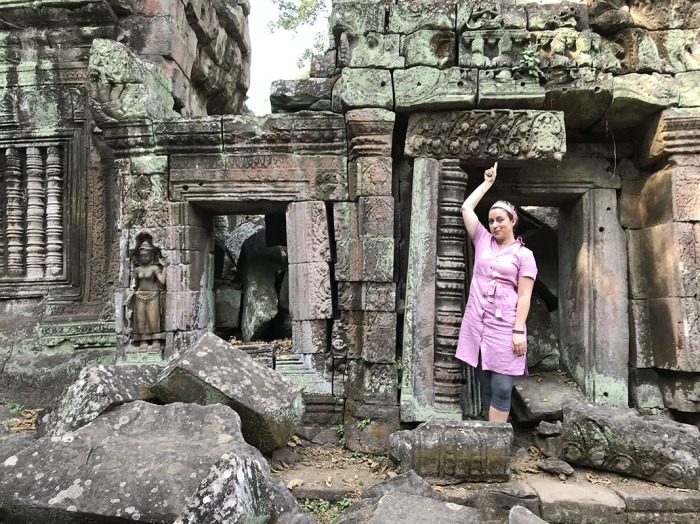




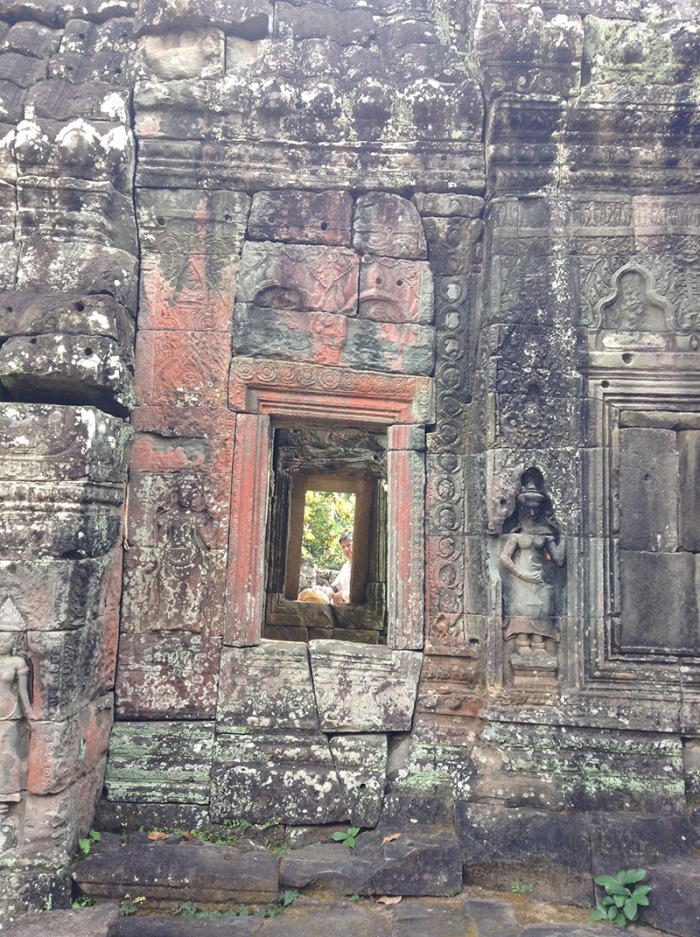

























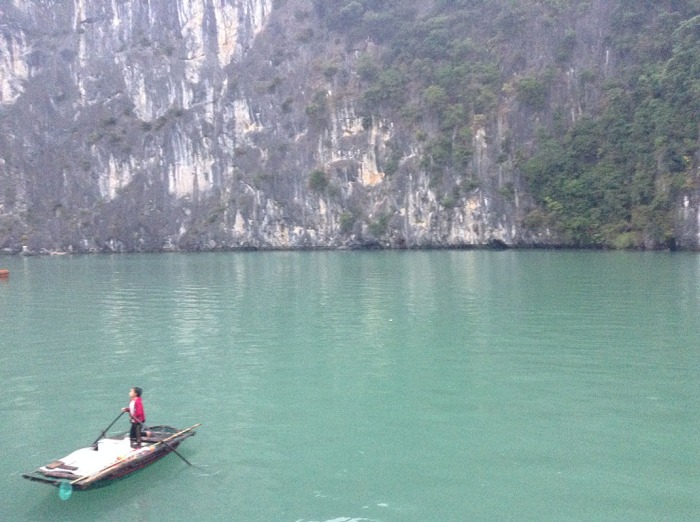






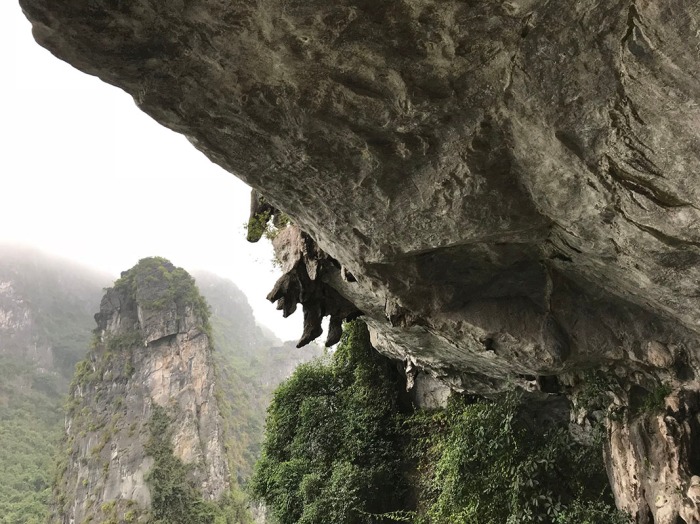








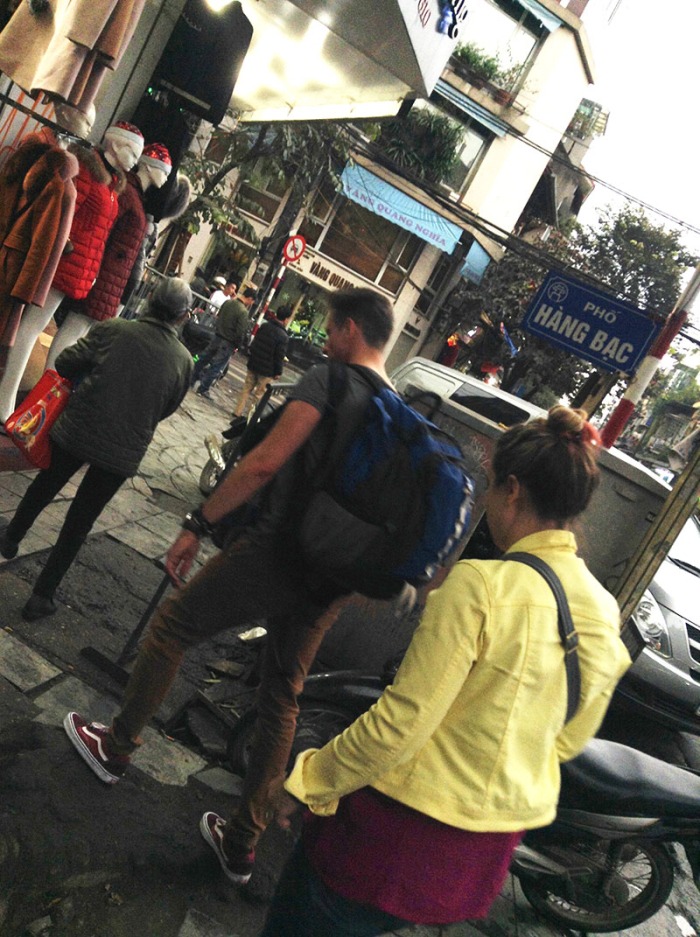

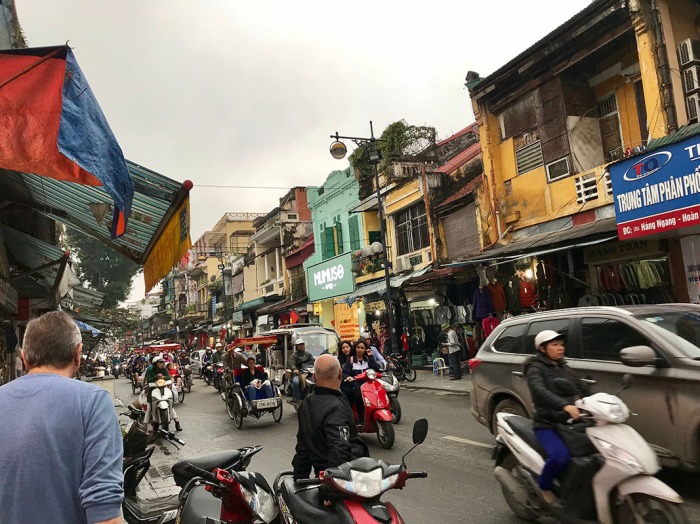





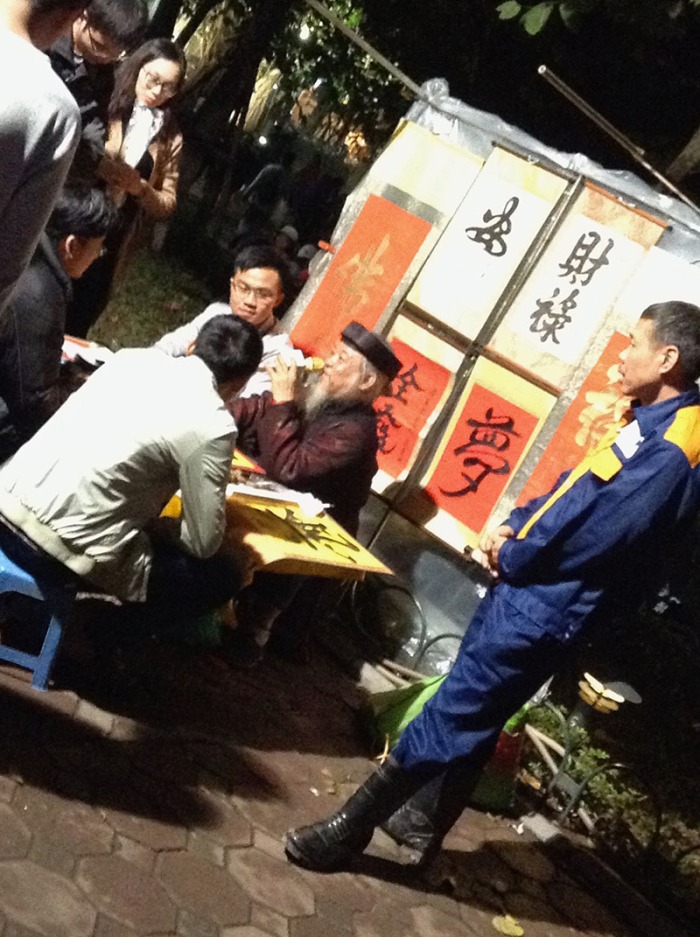
 The weather was perfect; the rain from earlier that day had abated and we found ourselves in mild twenty-degree weather. We eventually made our way back to the main square and ventured up the market street. Like the main ring road, it had been closed to scooters and, here, countless vendors (and I mean, countless) had set up to sell their wares. To be honest, I didn’t find this part very interesting—it was just more of the same regular items that you can find everyday on the streets. I was hoping to find something antique or mysterious (like perhaps a doorknocker!), but if that section of the market exists, I haven’t found it (yet)!
The weather was perfect; the rain from earlier that day had abated and we found ourselves in mild twenty-degree weather. We eventually made our way back to the main square and ventured up the market street. Like the main ring road, it had been closed to scooters and, here, countless vendors (and I mean, countless) had set up to sell their wares. To be honest, I didn’t find this part very interesting—it was just more of the same regular items that you can find everyday on the streets. I was hoping to find something antique or mysterious (like perhaps a doorknocker!), but if that section of the market exists, I haven’t found it (yet)!


